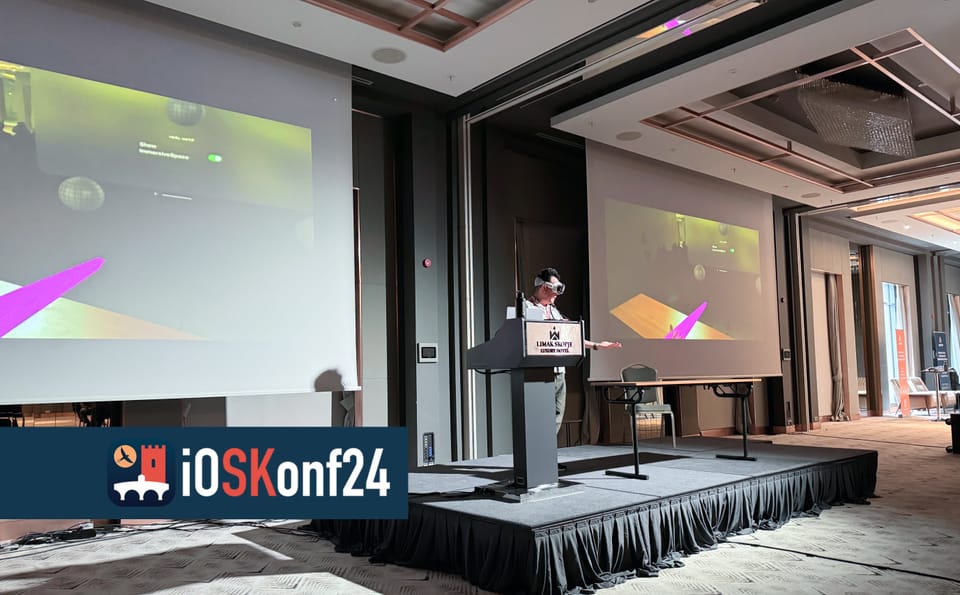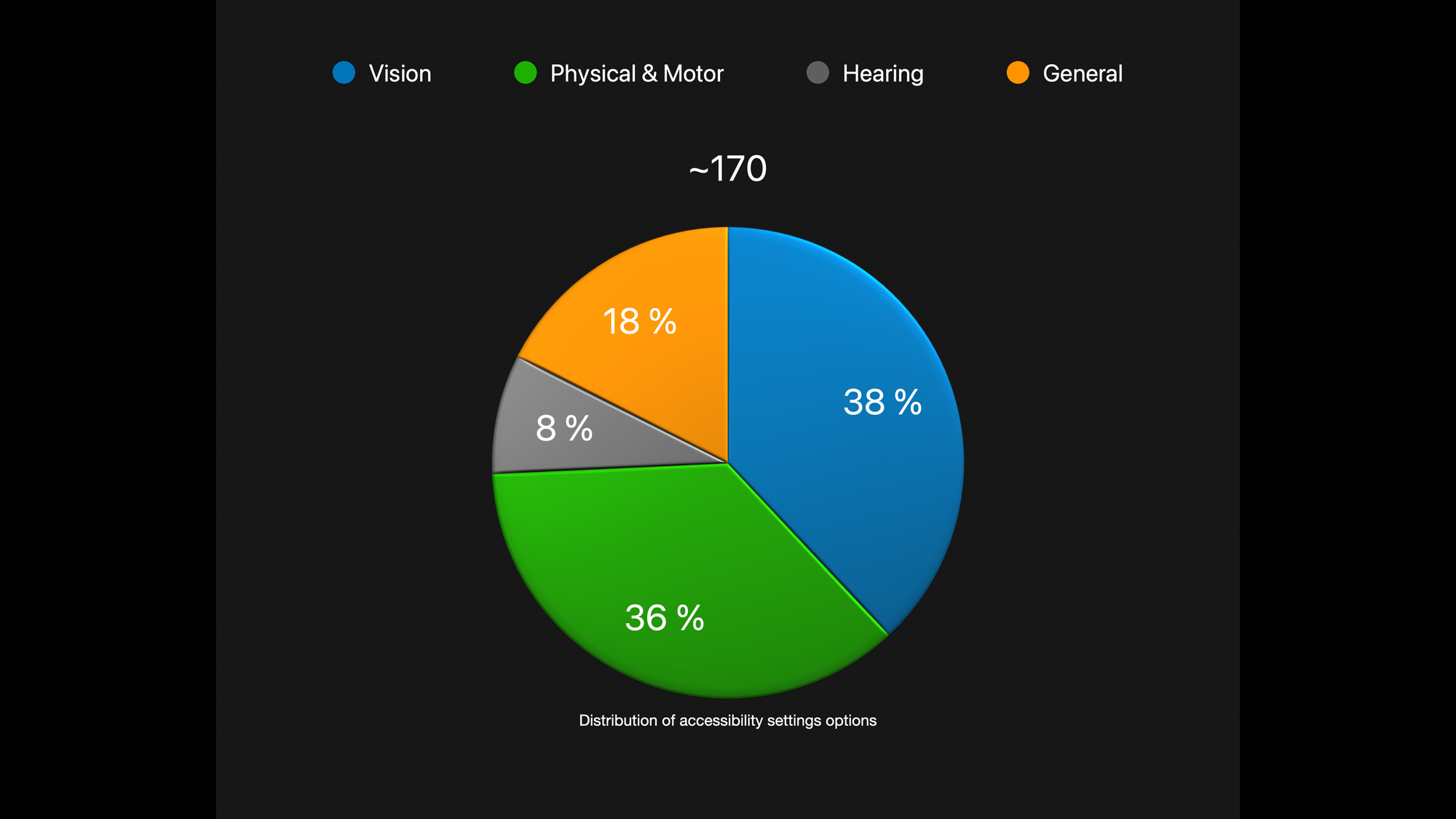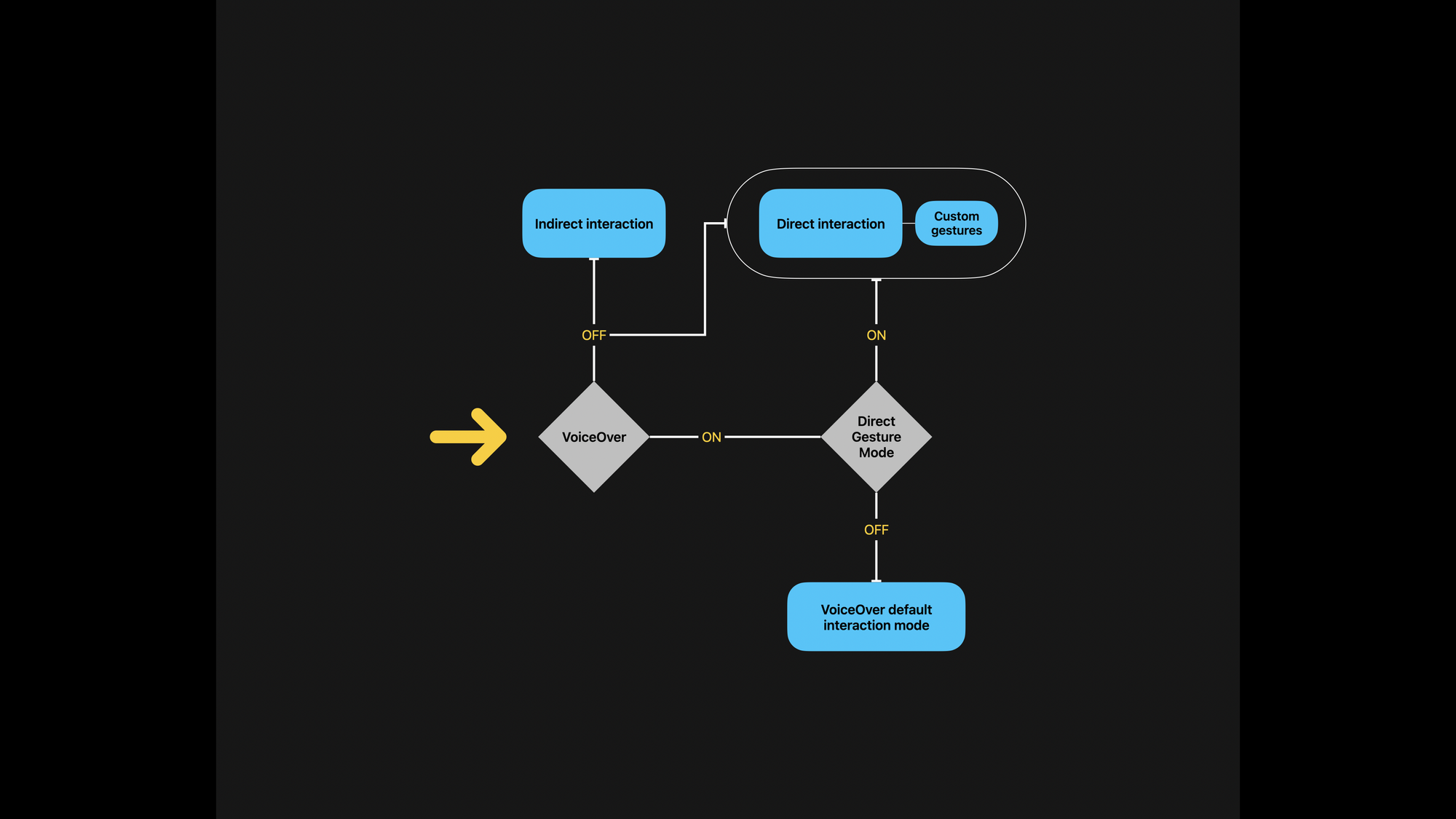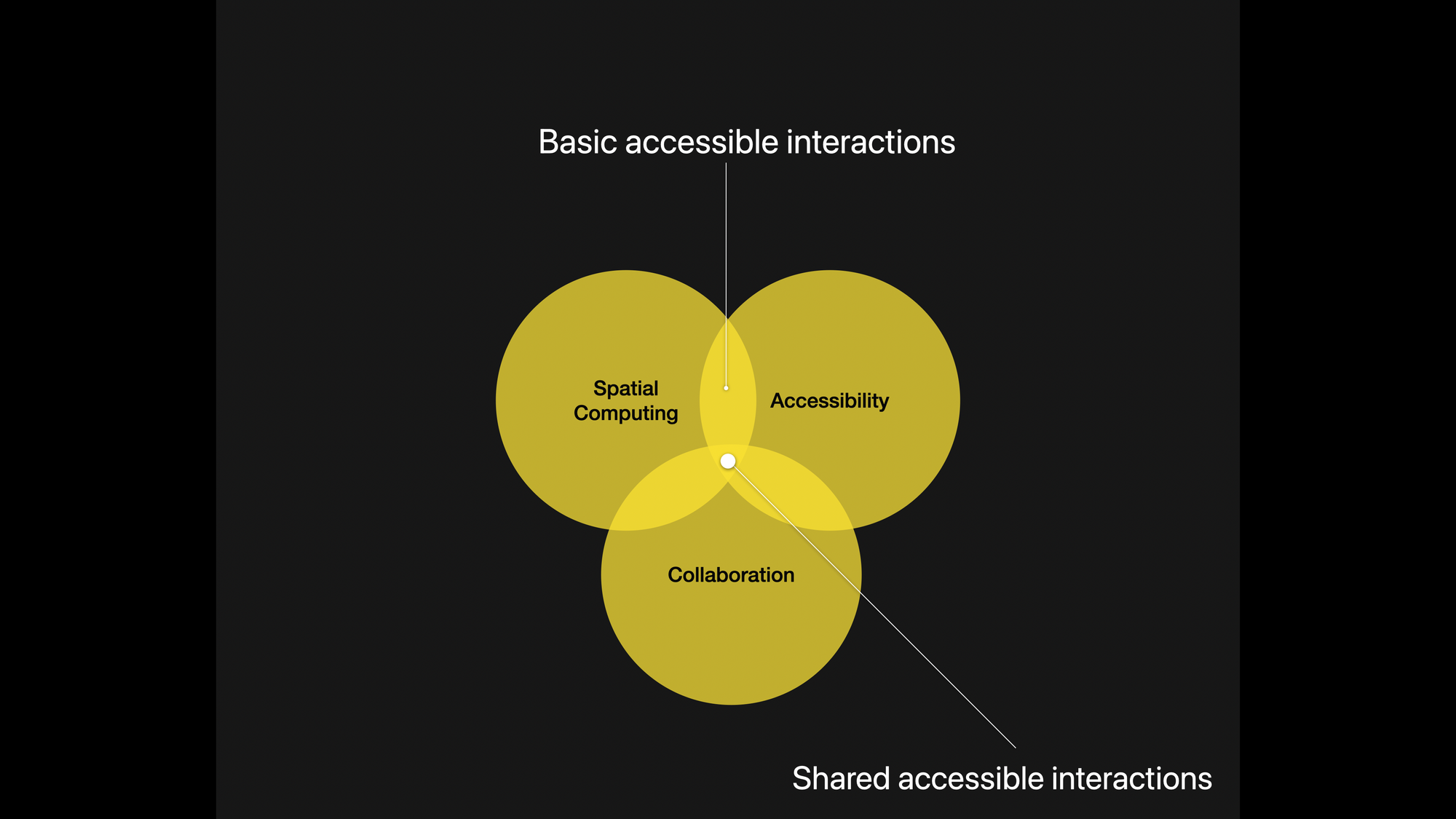Accessible Spatial Computing @ iOSKonf24

Last week, I had the opportunity to speak about accessible spatial computing at the iOSKonf24 conference. The talk coincided with the Global Accessibility Awareness Day, highlighting the importance of making new technology accessible to all.
The presentation format was refined from Let's visionOS 2024 with the intention be more clear, simple, and approachable while upholding the same principles 🤞
Takeaways
Accessibility Features
A lot of accessibility features have been built into the Vision Pro, in fact, contains the largest list of accessibility features we’ve ever included in the first generation of a product. It includes a diverse set of features that cover various skills areas and offer a wide range of variations. VoiceOver interaction modes, text and display options, speech control, motor features like pointer control or dwell control, and customisable gestures are some of the features that stand out.


Image gallery contains two slides from the presentation; the first illustrates a distribution chart of accessibility features, while the second is a flowchart explaining the direct gesture mode of VoiceOver
Innovative Input Options
I explain how Vision Pro introduces a user-friendly input model for spatial computing that relies on hands, eyes, and voice, aiming to be intuitive and controller-free. This approach expands the range of inputs, reducing the necessity for physical interaction with the device.

During the presentation, I mentioned the Vision Pro teardown as part of the contained hardware sensors and the potential for developing software solutions based on them
Indirect Interaction
One of Vision Pro's key advantages is its emphasis on indirect interaction. The precision of this system enhances accessibility, enabling users to interact with spatial apps without the need to physically reach the objects. It demonstrates Apple's dedication to developing user-friendly and accessible technologies. I always take a detour on some basis of HCI on this point as I believe the way one may interweave between levels of interaction makes it one of a kind.
Human-Centered Design
The development of this device demonstrates Apple's empathy-driven approach. Apple designed a device that not only innovates but also prioritises inclusivity by considering the diverse needs of users. This approach is crucial for developing accessible technology that can be effectively utilized by everyone, and I firmly believe its underlying philosophy can serve as a fundamental ideation framework for a wide range of products.
Collaborative Accessibility
Going forward, the emphasis is on improving collaborative and accessible spatial interactions to create a more inclusive experience. This includes creating accessible shared virtual interactions, spatially aware information, and collaborative problem-solving patters to promote a more inclusive and shared experience in spatial computing. In future presentations, I plan to highlight the significance of this interaction for caregivers.

Q&A
The final part of the session was highly engaging, generating significant interest and participation. Questions ranged from "This is fantastic; how can I begin implementing?" to "Does not the price defeat the purpose of this assistive technology in particular?", questions combined with some extra post-feedback, showed me how difficult it is to many developers to integrate accessibility into an existing pipeline, whether in a huge organisation (no motivation) or as an independent (no time). All of this encouraged me to be more active in sharing resources, ideas, and procedures.
📄 Explore accessible spatial interactions MK.pdf

